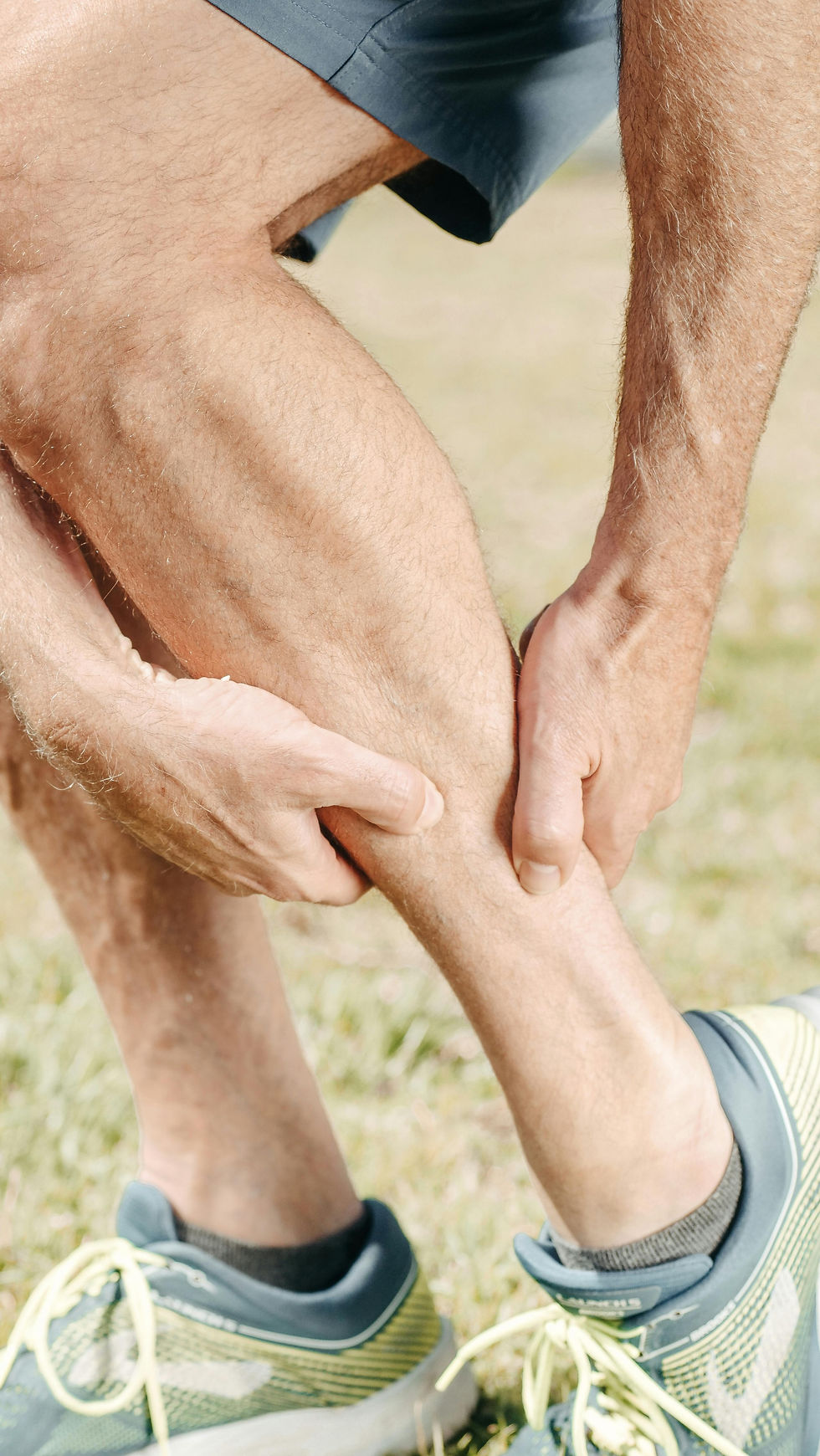Achilles Tendon Pain
- Dmitry Choklin, PT, DPT, CSCS
- Aug 19
- 2 min read

Achilles tendinopathy, often referred to as Achilles tendonitis, is a common condition involving pain, stiffness, and impaired performance in the Achilles tendon—typically located just above the heel. It’s especially prevalent among runners, weekend athletes, and individuals whose jobs or travel routines demand long periods of standing or walking. According to clinical guidelines and multiple systematic reviews (JOSPT, British Journal of Sports Medicine), Achilles tendinopathy is best managed through a structured loading program—not rest or passive modalities.
Contrary to outdated terminology, this condition is rarely an "inflammatory" problem. Modern imaging and histological studies show that tendinopathy involves collagen disorganization, neovascularization, and tendon thickening—not acute inflammation. This is why anti-inflammatories and ice may provide short-term symptom relief but do not address the root dysfunction. Instead, current best practice emphasizes progressive mechanical loading to stimulate tendon remodeling and restore load tolerance.
Our evaluation process begins by identifying whether the condition is insertional (at the heel) or mid-portion (2–6 cm above it), as each subtype responds differently to loading protocols. We assess calf strength, ankle mobility, kinetic chain alignment, and training volume. Common contributing factors include sudden increases in activity, poor footwear, limited dorsiflexion, and decreased soleus endurance—especially in high-demand individuals who are used to pushing through discomfort.
Treatment centers on eccentric and heavy slow resistance training, supported by evidence from Alfredson and more recent randomized trials. These exercises are carefully dosed to provoke tendon adaptation without flaring symptoms. Insertional tendinopathy is modified to avoid end-range dorsiflexion, while mid-portion cases can tolerate full-range eccentric work. Manual therapy, if used, is targeted and time-limited—focusing on soft tissue mobility or adjacent joint restrictions. Return-to-run or return-to-activity protocols are customized and progressed based on symptom monitoring and load response.
Rather than chasing symptoms or relying on passive treatments, our approach rebuilds the tendon’s capacity to tolerate stress—so you can return to running, training, or leading full workdays without pain. With adherence to current best evidence and individualized progression, Achilles tendinopathy is a fixable problem, not a chronic sentence.


Comments